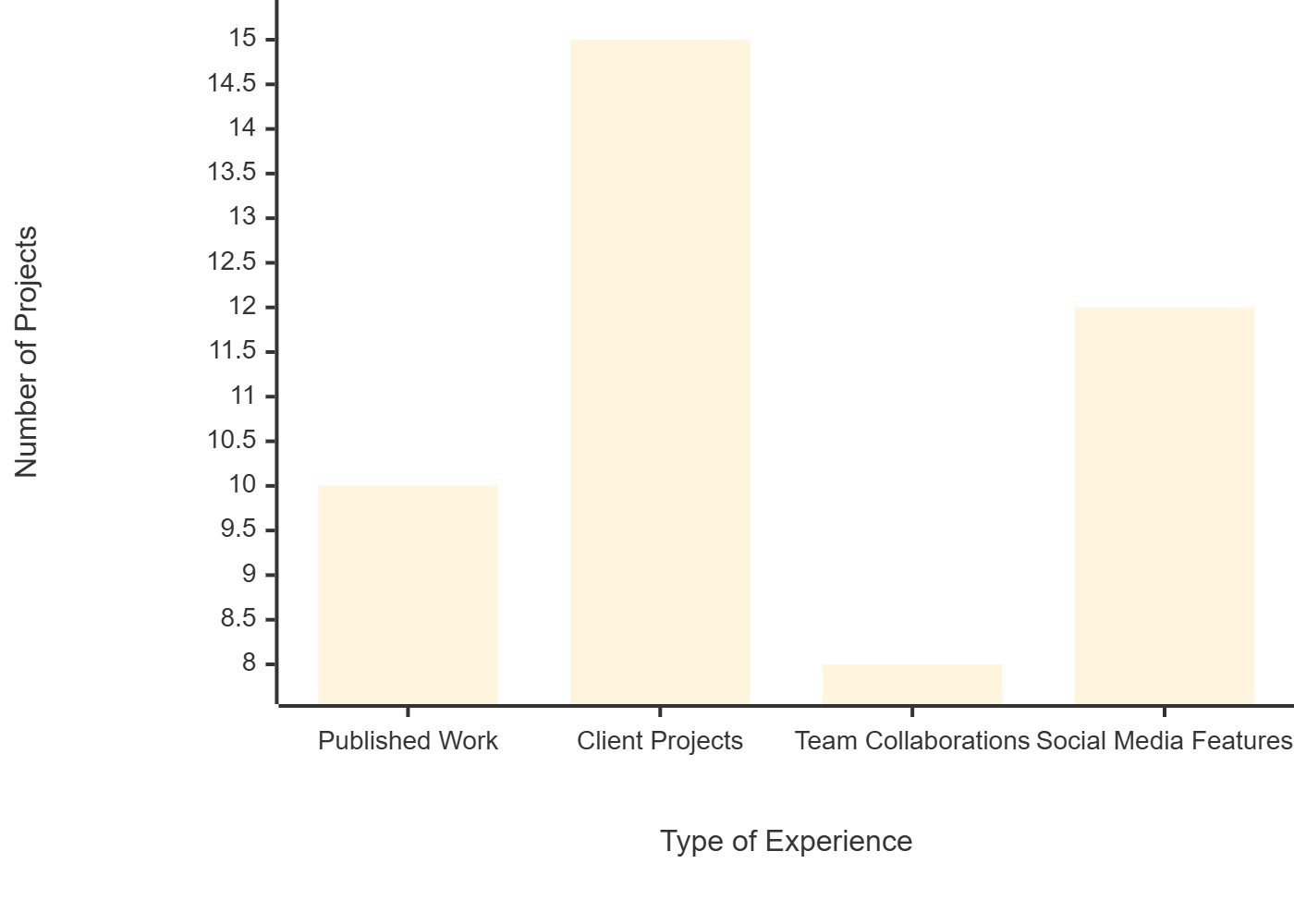Getting Clients: Everything You Need to Know For Building Your Food Photography Portfolio
Building a food photography portfolio is a critical step in attracting the clients you want to work with. Whether you’re a beginner or a seasoned photographer aiming to elevate your career, a well-crafted portfolio showcases your skills, style, and ability to deliver what clients need. This comprehensive guide dives into everything you need to know to create a compelling food photography portfolio that draws in your dream clients, from identifying your niche to mastering website design and storytelling through imagery. We’ll cover essential strategies, practical tips, and professional insights to help you stand out in the competitive world of food photography.
Understanding Your Ideal Clients
Before you start curating images or designing a website, you must define your ideal clients. Knowing who you want to work with shapes every decision in building your portfolio, from the types of images you include to the overall aesthetic. Without a clear understanding of your target audience, you risk creating a portfolio that’s too generic to appeal to anyone.
Types of Food Photography Clients
Food photography spans multiple niches, each with distinct needs and expectations. Here are the primary categories of clients in the food photography industry:
- Editorial (Magazines): These clients, such as food and lifestyle magazines, prioritize storytelling and visually engaging images that complement written content. They often seek a cohesive narrative and a polished, editorial style.
- Commercial: Brands, restaurants, and food companies hire photographers for product-focused images used in marketing materials, menus, or packaging. These images emphasize the product’s appeal and brand identity.
- Advertising: Advertising clients require high-impact, bold visuals for campaigns, often involving creative direction and collaboration with larger teams, including art directors and food stylists.
- Cookbooks/Publishing: Publishers need consistent, high-quality images that align with a book’s theme, often requiring a series of photos that tell a story or showcase recipes.
- Social Media: Influencers, food bloggers, and brands seek vibrant, eye-catching images optimized for platforms like Instagram, TikTok, or Pinterest, often requiring a trendy and approachable aesthetic.
Questions to Define Your Niche
To narrow down your focus, ask yourself the following:
- What type of food photography am I most passionate about?
- What are my technical strengths (e.g., lighting, composition, or styling)?
- Are my current clients aligned with my desired niche?
- Who are my dream clients (e.g., specific magazines, restaurants, or brands)?
- What types of images do these clients expect to see in a portfolio?
By answering these questions, you can tailor your portfolio to attract the right clients. For example, if you aim to work with high-end restaurants, your portfolio should emphasize sophisticated food scenes and chef portraits. If social media is your target, focus on vibrant, shareable images with modern aesthetics.
Building Your Food Photography Portfolio
Once you’ve identified your niche and ideal clients, it’s time to create a portfolio that showcases your skills and resonates with your target audience. A strong portfolio is more than a collection of images—it’s a strategic tool to demonstrate your expertise, creativity, and ability to meet client needs. Below are the key elements to consider when building your portfolio.
1. Choose a Simple Website Design
Your portfolio website is your digital storefront, and its design can make or break a client’s first impression. A clean, professional, and minimalistic design ensures your photography remains the focal point. Here’s how to achieve this:
- Prioritize Simplicity: Use a neutral color palette, such as white or soft gray, to create ample white space that highlights your images. Avoid overly colorful or cluttered designs that distract from your work.
- Showcase Personality Sparingly: Incorporate subtle branding elements, like a logo or font style, to reflect your personality without overshadowing your photography.
- Use Reliable Platforms: Beginner-friendly platforms like Squarespace, Zenfolio, or Photoshelter offer sleek templates tailored for photographers. These platforms are easy to use and provide professional designs that require minimal technical expertise.
Tip: Test your website’s user experience on both desktop and mobile devices. Ensure images load quickly and navigation is intuitive, as clients often browse portfolios on the go.
2. Organize Your Portfolio with Galleries
A well-organized portfolio makes it easy for clients to find the types of images they’re looking for. Consider creating separate galleries based on themes or categories, such as:
- Desserts
- Savory dishes
- Beverages
- Breakfast foods
- Entrees
- Ingredients or process shots
Organizing images into galleries allows you to showcase your versatility while keeping your portfolio cohesive. For example, a coffee brand can quickly navigate to your “Beverages” gallery to assess your ability to photograph their product.
Example: Below is a sample structure for organizing your portfolio galleries using a Mermaid flowchart to visualize the hierarchy.

This structure ensures clients can easily navigate to specific categories, improving their experience and increasing the likelihood of engagement.
3. Curate Your Best Images
Selecting the right images is the heart of your portfolio. Aim for 30–50 images that reflect your style, brand, and the needs of your ideal clients. Here’s how to choose:
- Highlight Your Strengths: Focus on images that showcase your unique skills, whether it’s masterful lighting, creative composition, or storytelling.
- Stay On-Brand: Exclude images that don’t align with your niche or client expectations, even if they’re technically excellent. For example, a moody, dark shot may not suit a client seeking light and airy aesthetics.
- Show Variety: Demonstrate your versatility by including a range of shots, such as:
- Light and airy images
- Dark and moody compositions
- Close-up macro shots
- Wide-angle food scenes
- Action shots (e.g., pouring liquids or sprinkling spices)
- Portraits of chefs or food-related subjects
- Colorful and monochromatic images
- Different meal types (breakfast, lunch, dinner)
Types of Images to Include in Your Portfolio
| Image Type | Purpose | Example |
|---|---|---|
| Light and Airy | Appeals to editorial and social media clients for a fresh, vibrant look | Bright fruit salad shot |
| Dark and Moody | Attracts high-end restaurants or luxury brands | Chocolate dessert in low light |
| Macro Shots | Shows attention to detail and texture | Close-up of bread crust |
| Action Shots | Highlights dynamic skills and creativity | Pouring syrup on pancakes |
| Food Scenes | Demonstrates storytelling and environmental context | Rustic farm-to-table dinner |
| Portraits | Appeals to restaurant or chef-focused clients | Chef preparing a dish |
Tip: Regularly update your portfolio by adding new work and removing outdated or weaker images. This keeps your portfolio fresh and relevant.
4. Showcase Your Experience
Clients want to work with photographers who have a proven track record. Highlighting your experience builds trust and credibility. Include the following in your portfolio:
- Published Work: If your images have appeared in magazines, cookbooks, or advertisements, showcase these tear sheets in a dedicated section. Even small-scale publications add credibility.
- Client Testimonials: If you’ve worked with clients, request brief testimonials to display on your website. This social proof reassures potential clients of your reliability.
- Team Collaboration: If you’ve worked with food stylists, prop stylists, or creative directors, mention these collaborations to demonstrate your ability to work in a team.
Example: Below is a sample bar chart showing the distribution of different types of experience in a portfolio.

This chart visually represents the diversity of your experience, making it easier for clients to assess your background at a glance.
5. Essential Website Pages
Beyond your image galleries, your website should include key pages to engage visitors and convert them into clients. These include:
- Homepage: Create a compelling landing page with a strong hero image and a brief introduction to your work. Use clear calls-to-action (e.g., “View Portfolio” or “Contact Me”) to guide visitors.
- About Page: Write a concise 250-word bio that covers your background, what inspires you, and your photography style. Include a professional headshot to humanize your brand. Clients want to know you’re a real person they can trust.
- Contact Page: Make it easy for clients to reach you by including your email, phone number, and a contact form. Consider using a Google Voice number if you prefer not to share your personal phone number.
- Tear Sheets Page: If you have at least five published works, create a dedicated section to showcase them. This demonstrates your professional experience and credibility.
Tip: Avoid cluttering your website with unrelated photography (e.g., weddings or portraits) if your focus is food photography. A consistent style reinforces your expertise.
Creating a Printed Portfolio
While an online portfolio is essential, a printed portfolio is a powerful tool for in-person meetings, especially for advertising or commercial clients. A tangible portfolio allows clients to engage with your work in a hands-on way, leaving a lasting impression.
Tips for a Printed Portfolio
- Select 20–30 Images: A printed portfolio can have fewer images than your online version, as clients spend more time reviewing each photo. Choose your strongest, most representative work.
- Organize by Category: Divide your portfolio into sections, such as editorial, commercial, or product shots, to make it easy for clients to navigate.
- Choose Quality Materials: Invest in high-quality prints and a professional binding, such as a screw-post book. Consider custom touches, like a fabric cover, to make your portfolio stand out.
- Create Two Versions: Have a larger portfolio for studio meetings and a compact version for travel. This ensures you’re prepared for any situation.
Specifications for Printed Portfolio
| Aspect | Recommendation | Estimated Cost |
|---|---|---|
| Print Size | 8×10 or 11×14 inches | $2–$5 per print |
| Binding Type | Screw-post or hardcover book | $50–$150 |
| Number of Images | 20–30 high-quality prints | $40–$150 (total) |
| Protective Cover | Fabric or leather envelope | $20–$50 |
| Portable Version | Smaller 6×8 prints in a compact binder | $30–$100 |
Tip: Update your printed portfolio every 6–12 months to reflect your latest work and maintain a fresh presentation.
Professional Insights from Portfolio Reviews
To gain a deeper understanding of what top clients look for, insights from professional portfolio reviews, such as those at the Palm Springs Photo Festival, are invaluable. Here are nine key takeaways to elevate your portfolio:
1. Be a Problem Solver
Clients value photographers who can overcome challenges, such as tricky lighting or complex compositions. Showcase images that demonstrate your ability to solve problems, like achieving perfect depth of field or balancing natural and artificial light.
2. Master Lighting
Lighting is the cornerstone of photography. Include a variety of lighting styles—natural, artificial, soft, and hard—to show your versatility. For example, a bright, airy shot of a summer salad contrasts with a moody, low-light dessert image to demonstrate your range.
3. Show Teamwork
Large-scale projects often involve creative teams, including food stylists, prop stylists, and art directors. Highlight images from collaborative projects to prove you can work effectively in a team setting.
4. Stand Out with Uniqueness
In a crowded market, one unforgettable image can make a lasting impression. Push your creative boundaries with experimental shots, unique angles, or bold compositions that reflect your personal style.
5. Tell Stories
A portfolio should tell a story, not just display individual images. Include photo series that convey a narrative, such as a farm-to-table sequence or a behind-the-scenes restaurant shoot.
6. Include Variety
Showcase a range of shots—wide food scenes, close-up macros, and portraits—to demonstrate your ability to handle diverse assignments. This variety also keeps your portfolio visually engaging.
7. Incorporate Motion
Motion assets, like GIFs or cinemagraphs, are increasingly in demand. Include simple motion elements, such as a pouring liquid or a sizzling dish, to show you’re adaptable to modern trends.
8. Highlight Pagination
The flow of images in your portfolio matters. Arrange images to create a cohesive story, such as grouping by color, mood, or subject. Seek feedback from peers or mentors to refine your pagination.
9. Show Your Personality
Your About page and overall website should reflect who you are. Clients want to work with approachable, reliable photographers. A bio, headshot, and clear contact information humanize your brand.
Finding Clients Actively
A stellar portfolio is only half the battle—actively seeking clients is crucial to growing your business. Relying solely on social media or passive exposure limits your reach. Here’s how to take control of your client acquisition:
Revisit Your Ideal Client List
Regularly reassess who your dream clients are. Your goals may evolve as your career progresses. Create a list of potential clients, such as:
- National or local magazines
- Cookbook publishers
- Restaurants or cafes
- Food brands (e.g., ice cream or beverage companies)
- Branding agencies
- Stock photography platforms
Tip: Use an Instagram “Saved” folder to bookmark potential clients’ profiles for easy reference when pitching.
Leverage Your Network
Networking is a powerful tool for finding clients. Share your work with:
- Friends and family
- Online communities (e.g., photography or food-related groups)
- Local business events or food festivals
A single referral can lead to significant opportunities. For example, a past colleague might recommend you to a restaurant owner, opening the door to a new project.
Pitch Strategically
Create a streamlined pitching process by:
- Compiling a list of 10–20 potential clients in your niche.
- Crafting personalized emails that highlight your relevant work and include a link to your portfolio.
- Following up politely after a week if you don’t hear back.
Sample Pitching Schedule
| Day | Task | Notes |
|---|---|---|
| Day 1 | Research 10 potential clients | Identify their needs and style |
| Day 2 | Draft personalized pitch emails | Include portfolio link and 2–3 images |
| Day 3 | Send emails to all clients | Use a professional email template |
| Day 7 | Follow up with non-responders | Keep tone polite and concise |
| Day 14 | Evaluate responses and adjust strategy | Refine pitch based on feedback |
Common Mistakes to Avoid
When building your portfolio, steer clear of these pitfalls:
- Overloading with Images: More isn’t always better. Curate 30–50 high-quality images rather than including every photo you’ve taken.
- Inconsistent Style: Mixing too many styles (e.g., moody and bright) without a clear narrative can confuse clients. Stick to a cohesive aesthetic.
- Neglecting Contact Information: Ensure your contact details are prominent and easy to find.
- Ignoring Mobile Optimization: Many clients browse portfolios on their phones, so test your website’s mobile performance.
- Focusing Solely on Social Media: While platforms like Instagram are useful, they’re not enough to attract high-value clients. A professional website is essential.
Taking Your Portfolio to the Next Level
Once your portfolio is live, seek feedback from industry professionals, such as creative directors or experienced photographers. Portfolio reviews, like those at photography festivals, provide actionable insights to refine your work. Additionally, consider the following:
- Collaborate with Stylists: Partner with food or prop stylists to elevate your images. This collaboration enhances your portfolio and prepares you for team-based projects.
- Experiment with New Techniques: Try new lighting setups, compositions, or motion elements to keep your portfolio dynamic.
- Track Analytics: Use tools like Google Analytics to monitor which portfolio images attract the most views or engagement, helping you refine your selection.
Conclusion
Building a food photography portfolio that attracts clients requires a strategic blend of self-awareness, technical skill, and proactive marketing. By defining your niche, curating a cohesive and versatile collection of images, and designing a user-friendly website, you create a powerful tool to showcase your talent. A printed portfolio adds a professional touch for in-person meetings, while active networking and pitching ensure your work reaches the right audience. With patience and persistence, your portfolio can open doors to your dream clients, whether they’re magazine editors, restaurant owners, or global food brands. Start building your portfolio today, and take the first step toward a thriving food photography career.
Please share this Getting Clients: Everything You Need to Know For Building Your Food Photography Portfolio with your friends and do a comment below about your feedback.
We will meet you on next article.
Until you can read, The Ultimate Food Photography Pricing Guide





